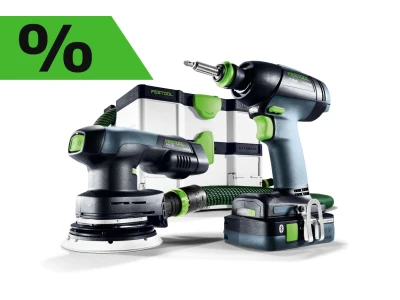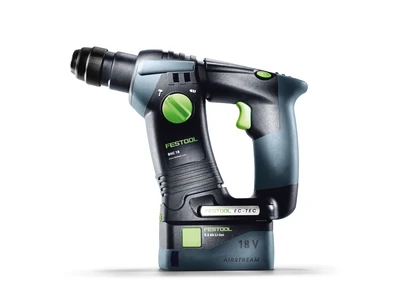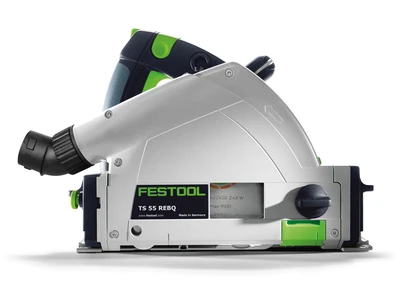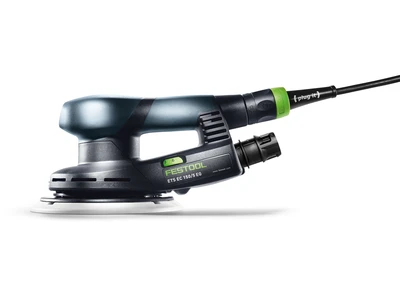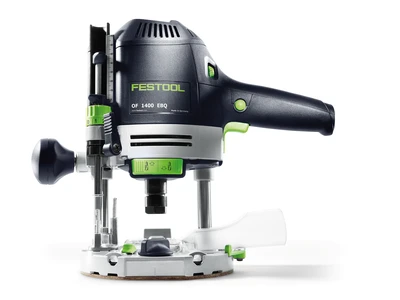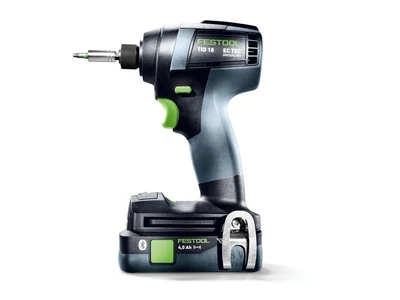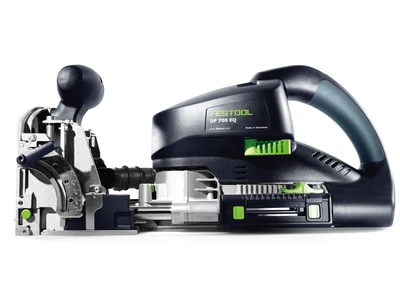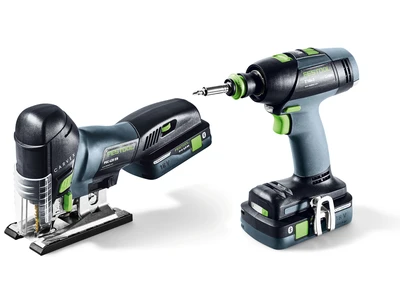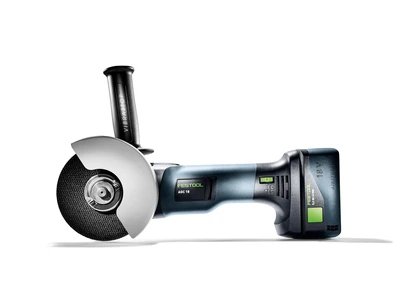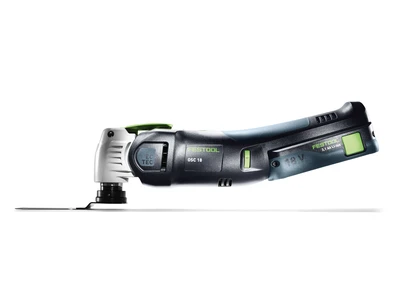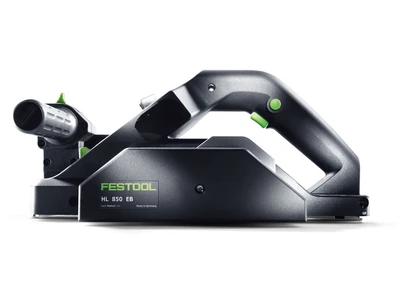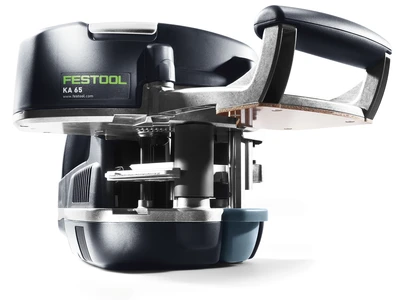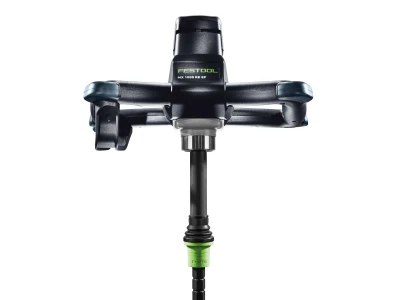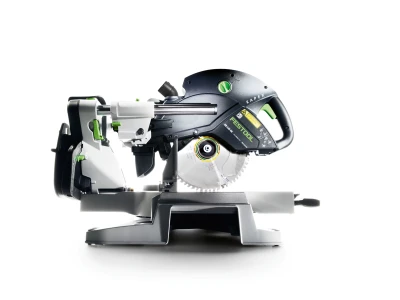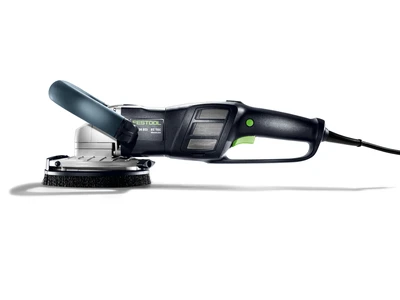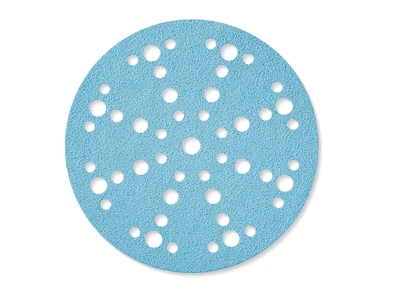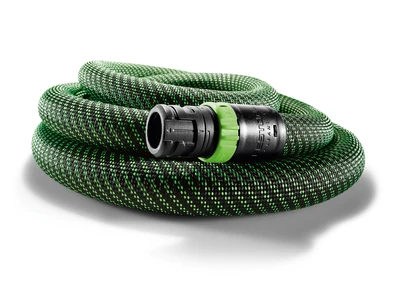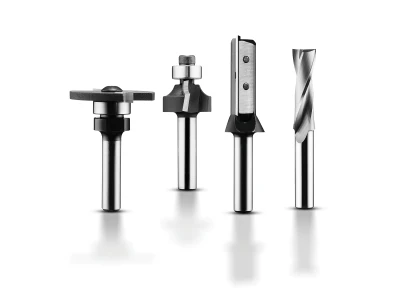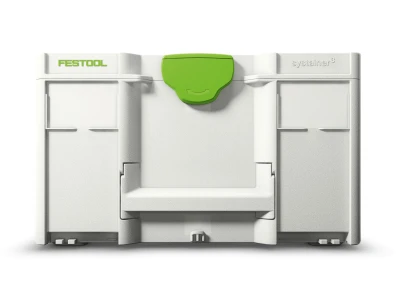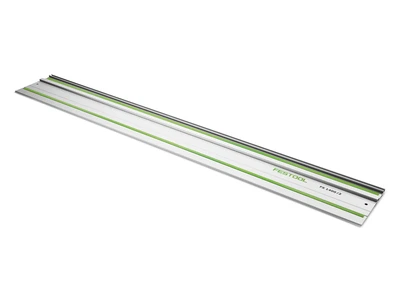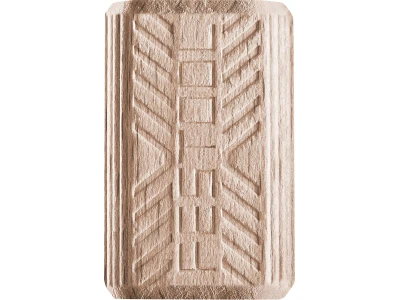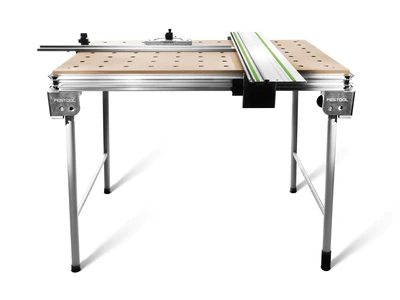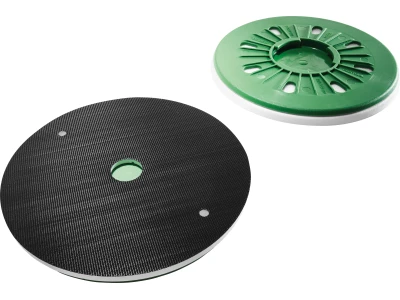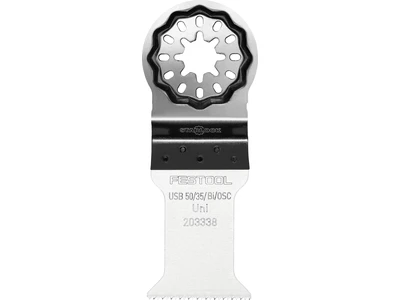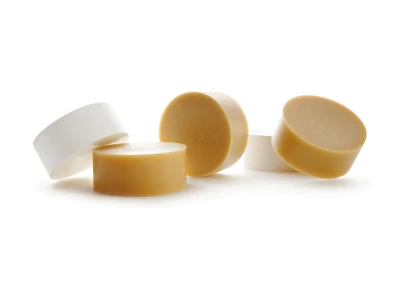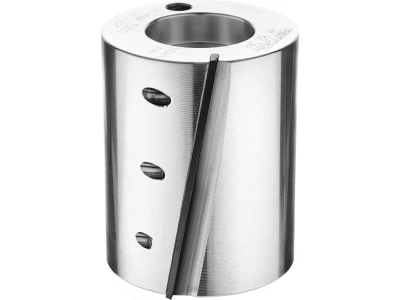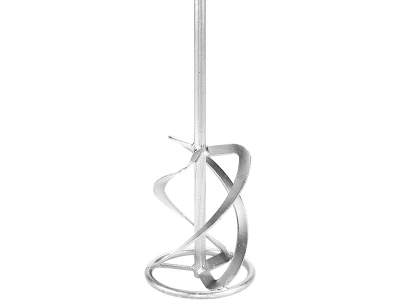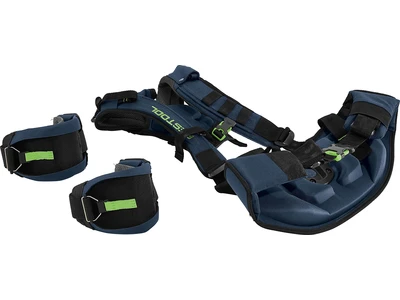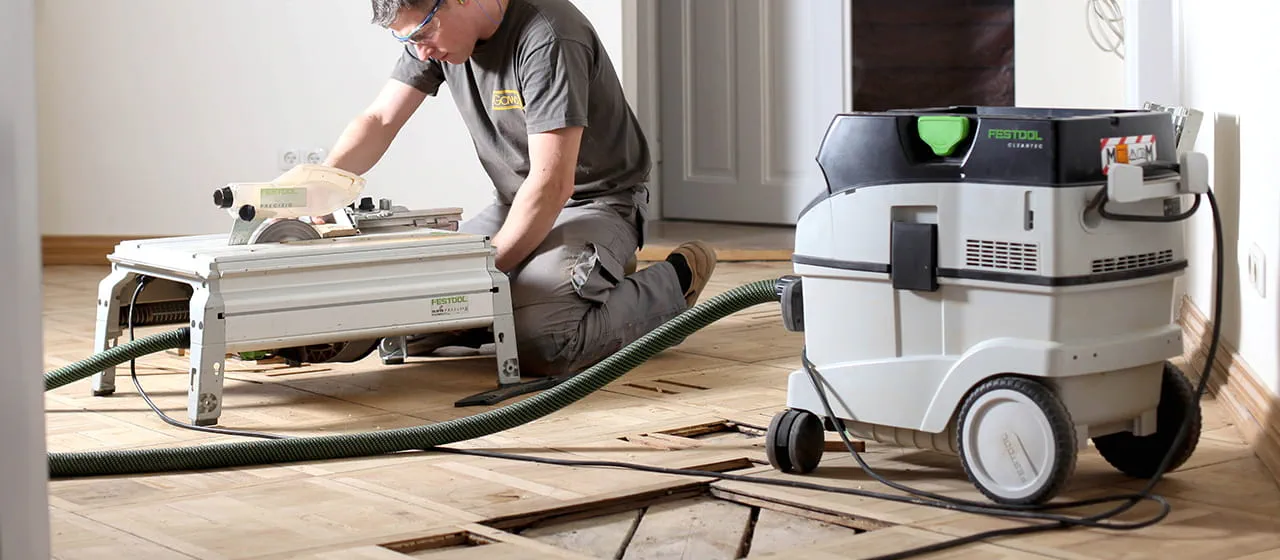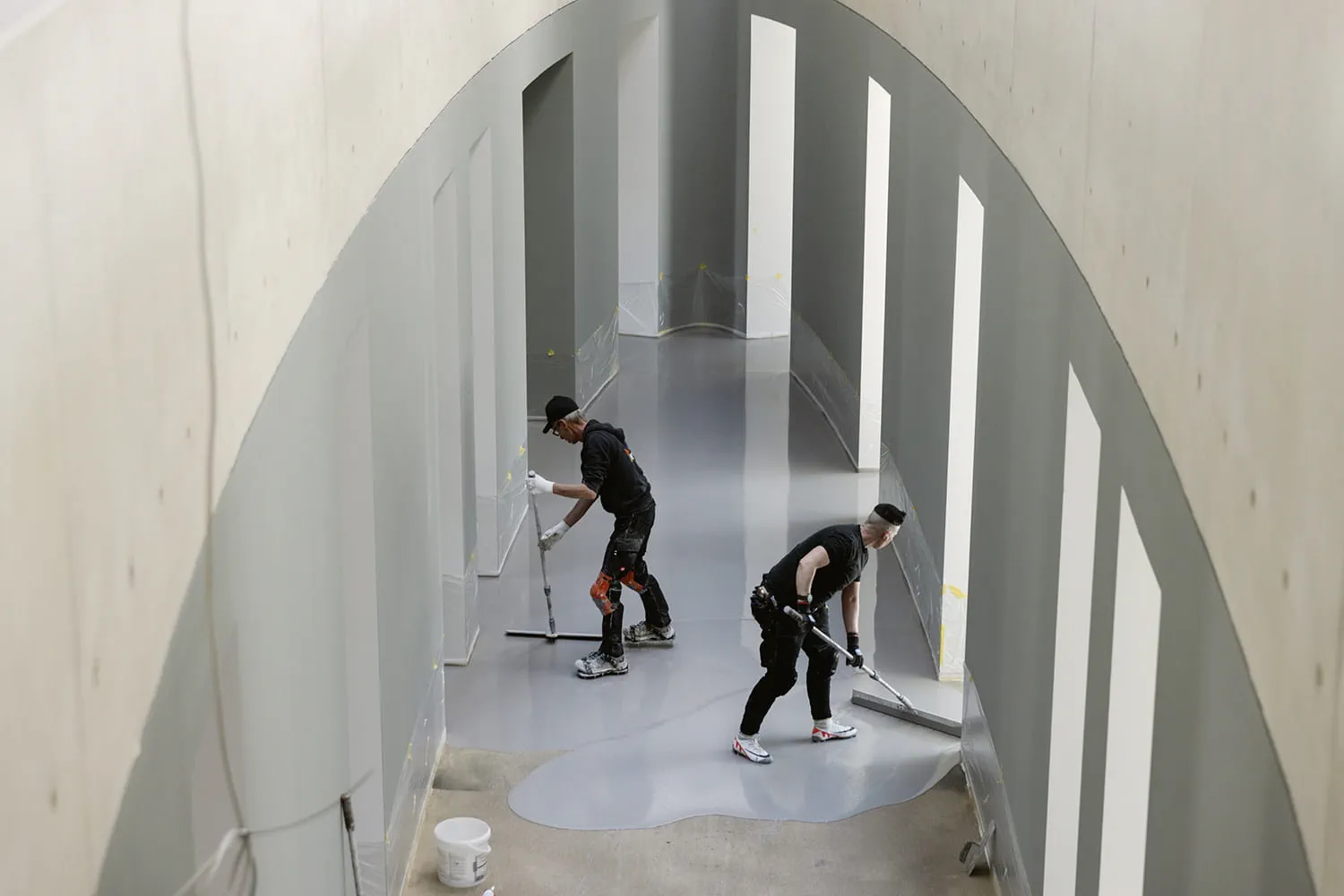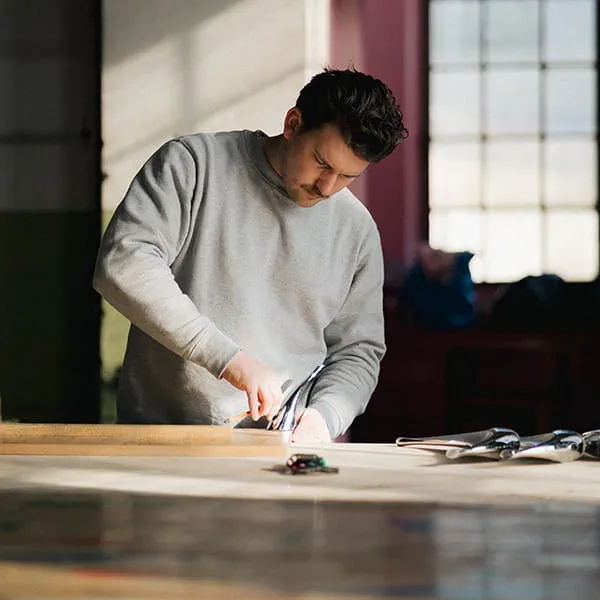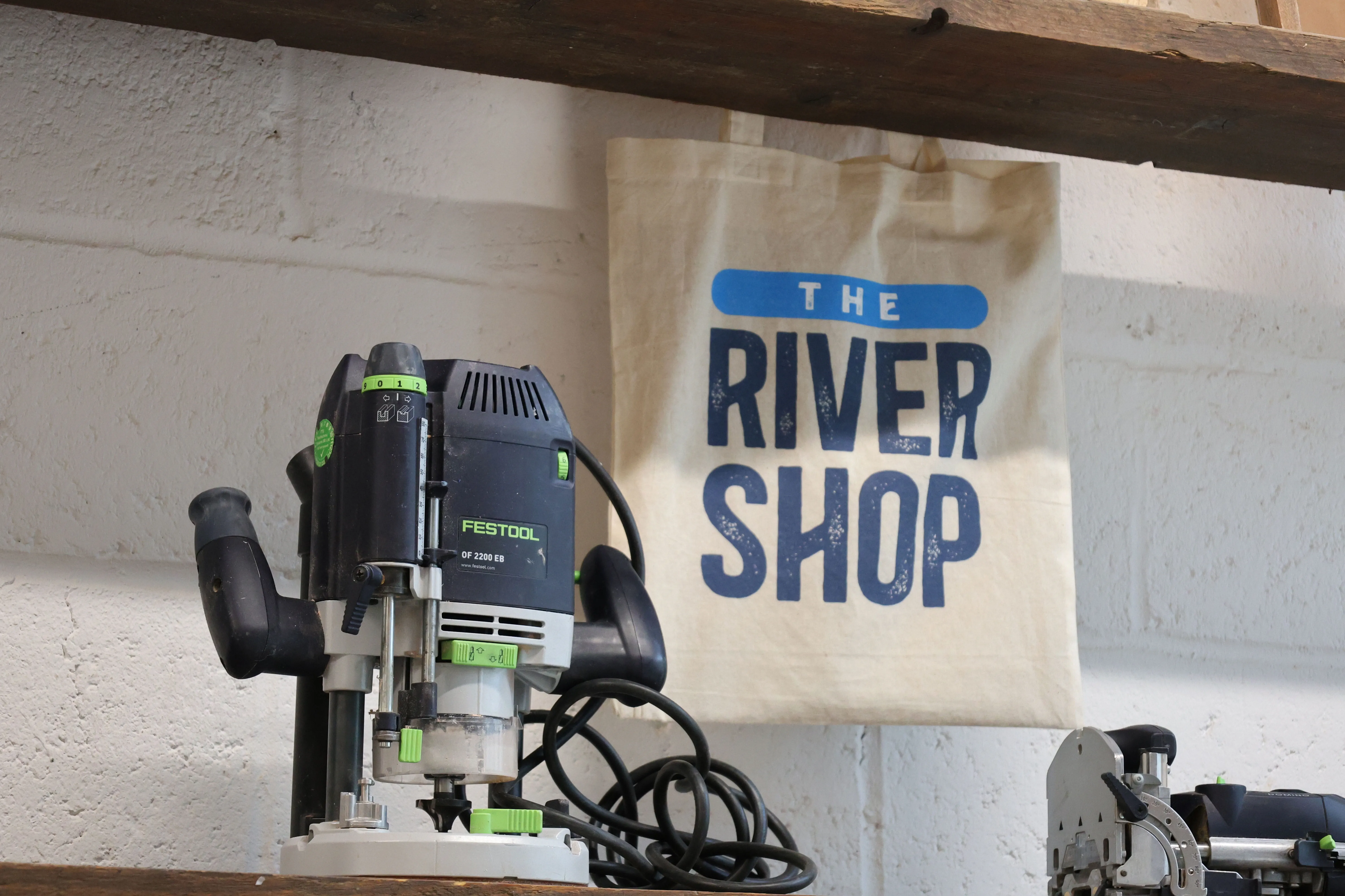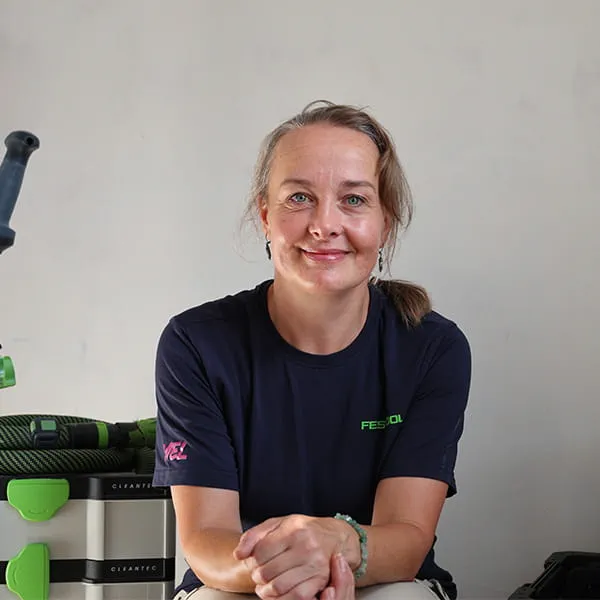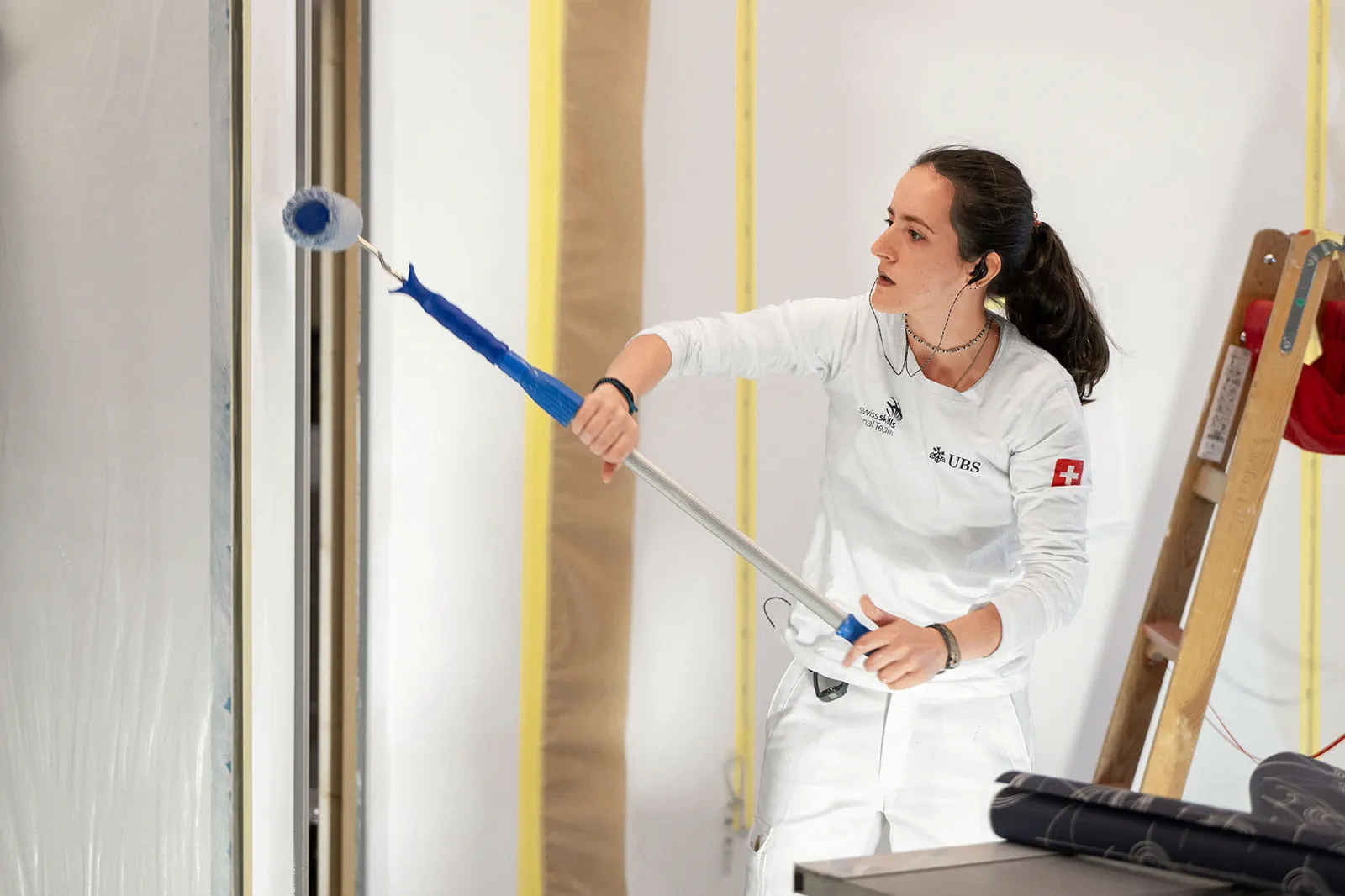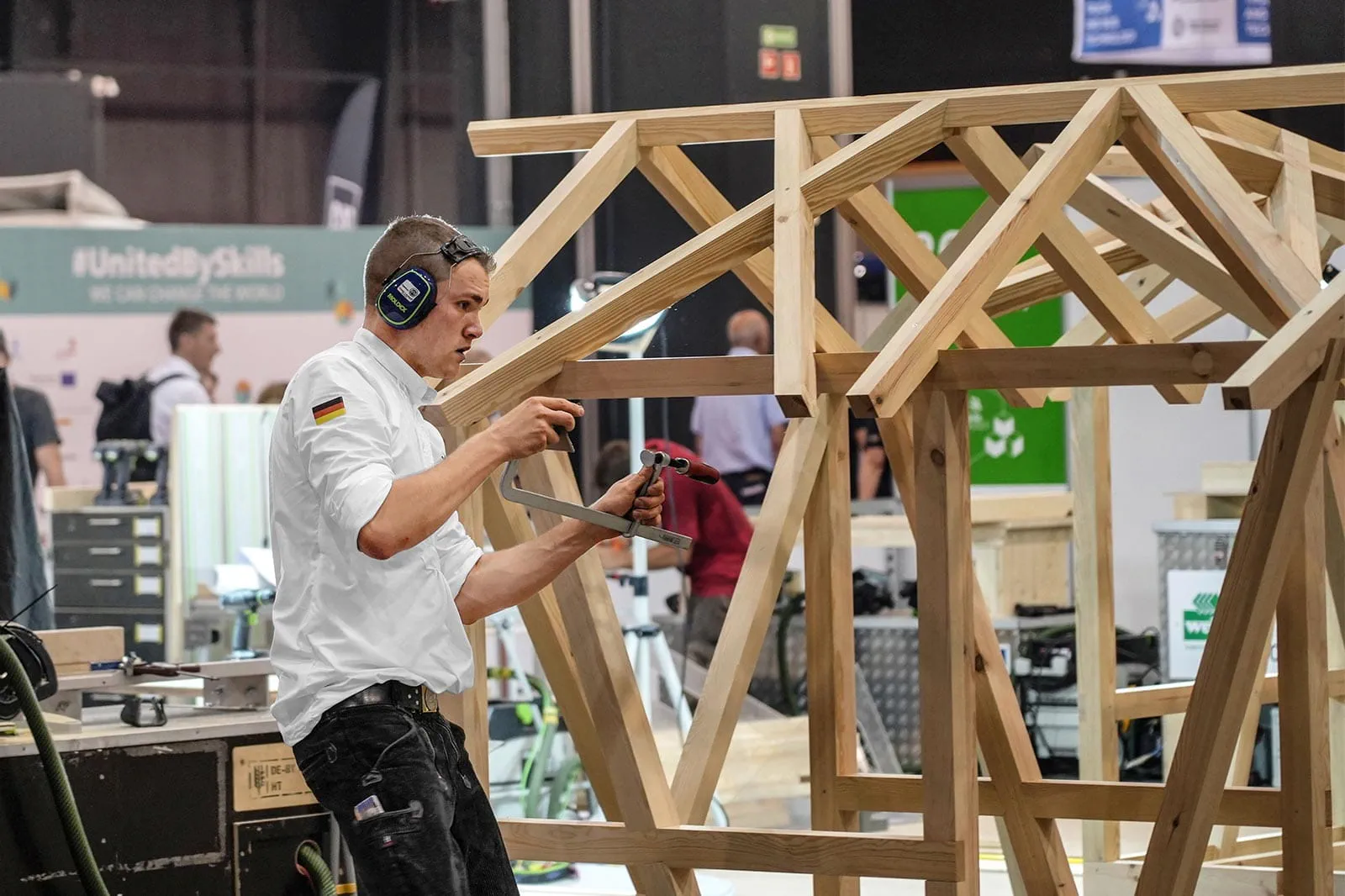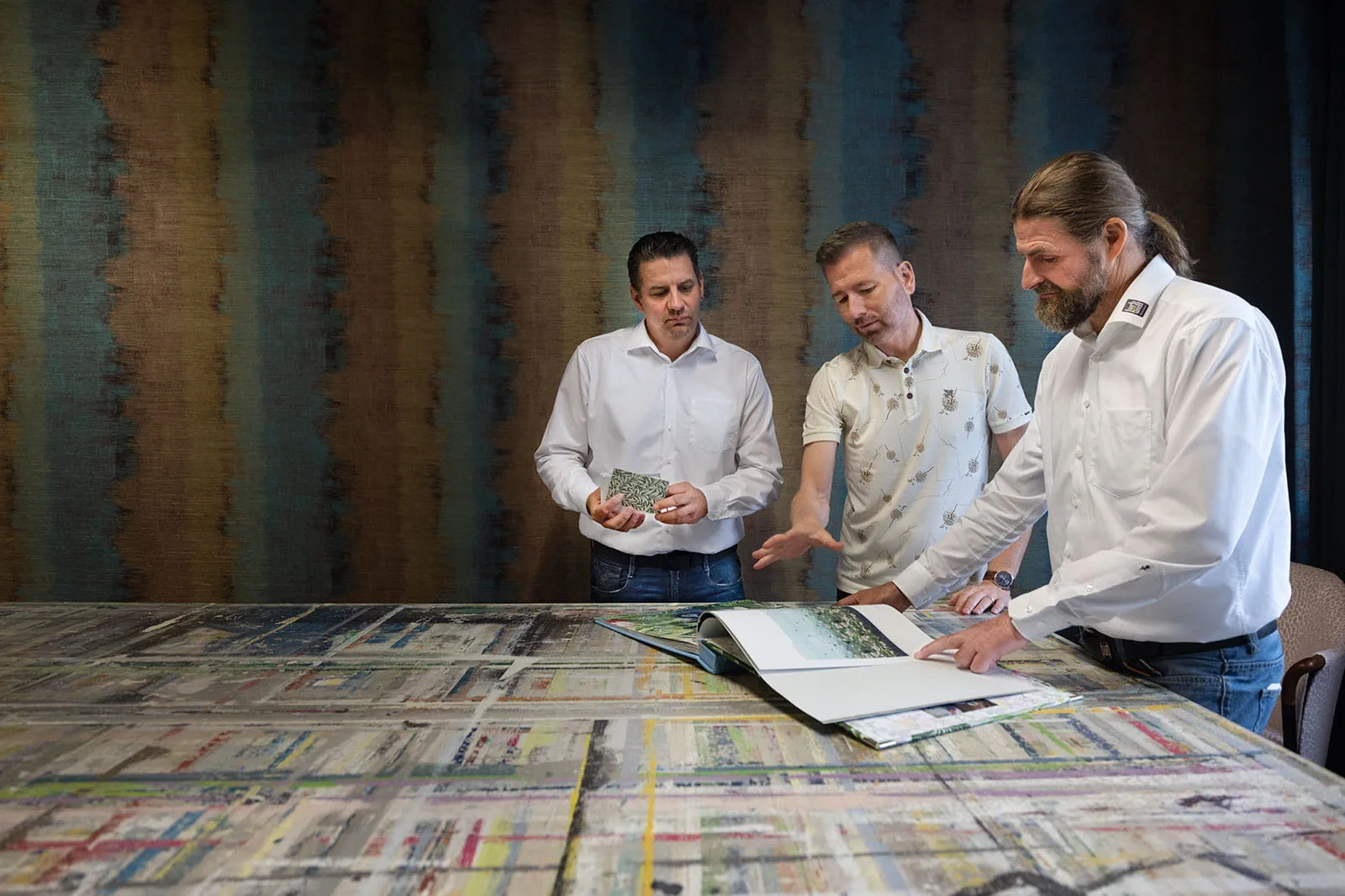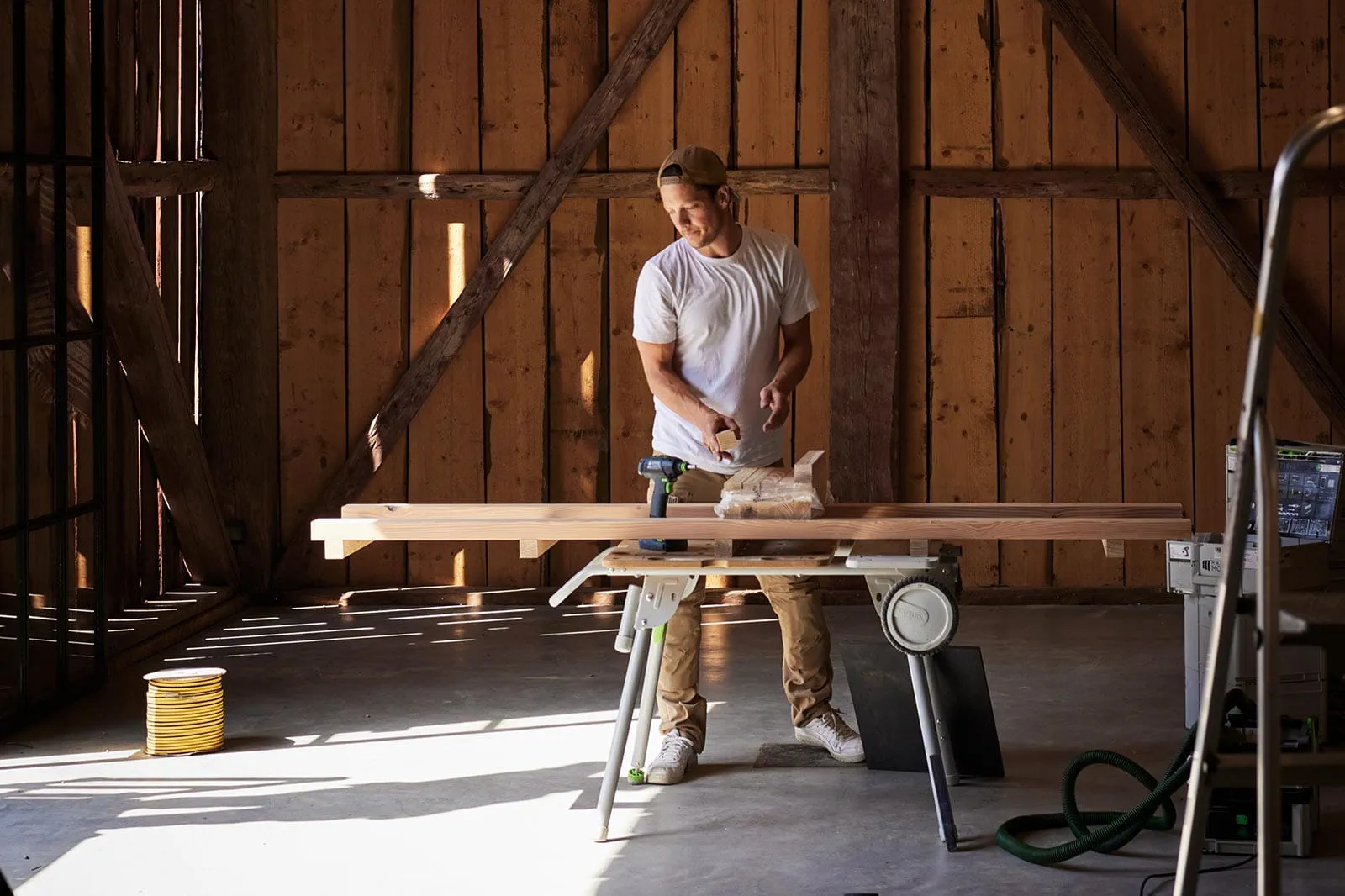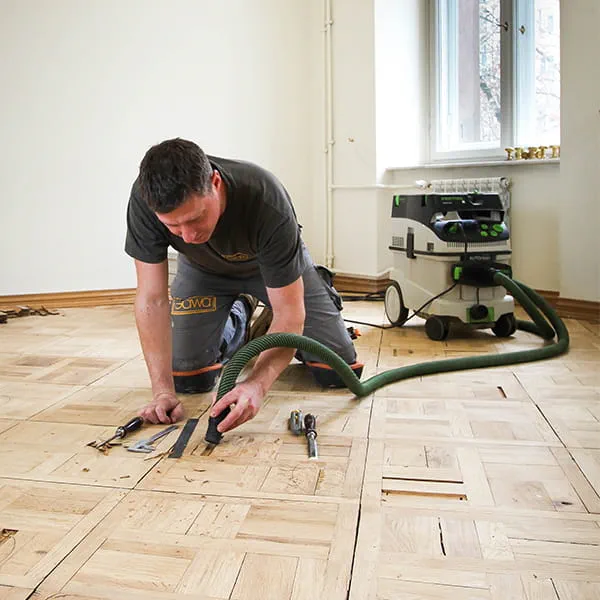
With oak and instant coffee
Craftsmanship meets a piece of history
Working with historical parquet flooring requires expertise and, more than anything, patience. Jarek Gawina not only uses his skill and the virtues of a parquet installer in his own work, but also passes them on to the younger generation. We met the parquet master installer in Warsaw to find out more about this slow-paced craft in a fast-moving world.
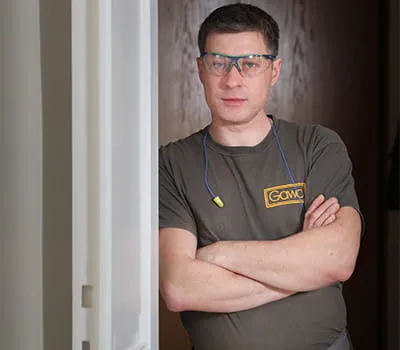
Jarek Gawina
Parquet master installer
It was only after several years of working in the construction industry that Jarek Gawina discovered his desire to become a parquet installer. Today, as vice-president of the National Association of Parquet Makers in Poland, he passes on his knowledge and enthusiasm to trainee craftsmen in workshops, articles in trade journals and lessons in technical colleges. His skills and, in particular, his social engagement make him one of the most highly sought-after flooring specialists in the country.
The Polish capital city Warsaw is busy on this autumn day and, with a bustling flow of people passing by, we make our way to today's destination. When we enter the inner courtyard of the Art Nouveau building through a heavy iron gateway, we are suddenly surrounded by a pleasant calm. Jarek Gawina is already waiting for us and guides us to the second floor of the building, where he is in the middle of renovating the historical parquet floor.
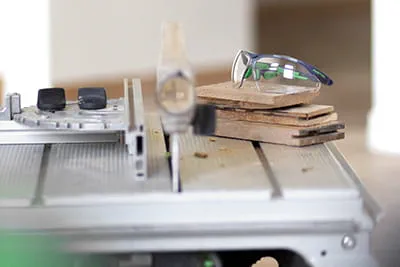
The first lesson: Tidiness
"The workplace should look as if you were expecting a customer at any moment," explained Jarek smiling as he drew our attention to his carefully packed tool boxes. Tidiness in the workplace is one of the first and most important lessons that he teaches trainees, because many complex steps require good coordination: The parquet master installer pre-sands the parquet, marks faults in the wood, repairs the relevant places or swaps parts and then sands the entire floor smooth in several steps. He likes to use the standardised Festool Systainers as a storage system. Reports from satisfied customers – even after unannounced visits – show that this compact organisation not only helps with achieving a satisfactory result, but also leaves a professional impression, he tells us with a grin.
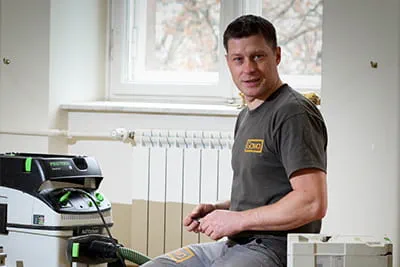
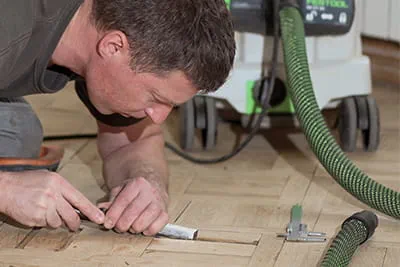
With attention to and passion for detail
When working with historical parquet flooring, minor details can be crucial for the final outcome – so it's all the more important to work with precision and focus. Jarek likes to appreciate the wood with all of his senses: "In my family, we have all always walked around barefoot," he tells us, stroking the ancient oak floor. Like his grandfather before him, he sometimes takes his shoes off so that he can get a better feel for the subtleties of the subsurface. The well-organised workspace not only helps Jarek to avoid injury, but also to focus and orientate himself: "When things are chaotic you can miss a lot," he stresses, because inconspicuous details or faults in the parquet, such as warping cracks, ring cracks, broken corners, underlying water and burn marks, are sometimes only noticed when you look closely, and have to be treated with care.
Jarek found his way to his current dream job via an indirect route: After a failed relationship, the young craftsman, who was constructing log buildings in Germany in the Canadian style, decided to return to Poland and discovered his new big passion there: parquet floors. He learned to appreciate the beauty and uniqueness of the parquet installer's profession and completed his training all the way to the final title of master craftsman.
Jarek found his way to his current dream job via an indirect route: After a failed relationship, the young craftsman, who was constructing log buildings in Germany in the Canadian style, decided to return to Poland and discovered his new big passion there: parquet floors. He learned to appreciate the beauty and uniqueness of the parquet installer's profession and completed his training all the way to the final title of master craftsman.
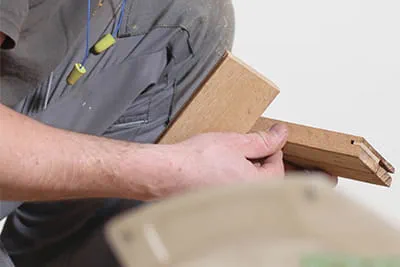
Knowledge meets precision
Work with parquet flooring requires specialist knowledge: You need to learn not only how to handle the blocks themselves, but also how to prepare the subsurface correctly. If the subsurface is too damp, the adhesive can detach or the parquet can bulge, as the wood reacts very sensitively to changes. While modern floors are usually installed with prefabricated tongue and groove, old blocks only have grooves. Jarek manually places the individually cut tongues on the longitudinal and transverse sides into the grooves to slot the wood exactly into the gap and ultimately create a professional join.
Learning from the master
Jarek enjoys sharing his enthusiasm for his work and the benefits it brings: "I want to teach young people about this wonderful profession," he explained. The parquet master installer passes on his knowledge by giving lessons at technical colleges. He is also active on social media and co-organised the Workcamp Parquet in Brzeg (Lower Silesia) in 2019, which was one of the biggest events in Europe on the subject of parquet installation. Jarek Gawina is also involved in social initiatives – he restored the parquet floor in the Centre for Children with Visual Impairments in Laski near Warsaw pro bono and made an associated teaching offer.
Since Jarek completed his own studies, a lot has changed in the work of a parquet installer. Preparing the subsurface correctly, laying the parquet in different artistic patterns and then sanding it off and oiling or polishing the finished surface – all these skills used to be part of the lengthy apprenticeship to become a parquet installer – a very special field of work, in Jarek's opinion. Today, the work is split into the trades of screed layer and floor layer, which each specialise in different roles. Jarek himself wants to pass on extensive knowledge and enable his apprentices to understand the connections between the two work steps.
Since Jarek completed his own studies, a lot has changed in the work of a parquet installer. Preparing the subsurface correctly, laying the parquet in different artistic patterns and then sanding it off and oiling or polishing the finished surface – all these skills used to be part of the lengthy apprenticeship to become a parquet installer – a very special field of work, in Jarek's opinion. Today, the work is split into the trades of screed layer and floor layer, which each specialise in different roles. Jarek himself wants to pass on extensive knowledge and enable his apprentices to understand the connections between the two work steps.
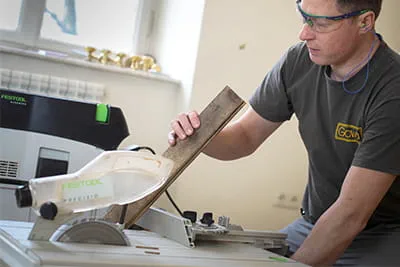
Antique floor, modern tools
Modern Festool tools line up to waltz through their work on the elaborate parquet floor of the pre-war building and they cut a good figure. Jarek likes the contrast between old and new. "I still remember the first time I was allowed to work with a Festool CS 70 trimming saw many years ago," he recalls. Straight and angled cross cuts can be created particularly easily and precisely using the trimming saw. The system concept impressed him back then, and perhaps that's why he has remained loyal to Festool to this day. "Even the dust extractor can be used as a transport trolley, ensuring tidiness in the workplace and giving a professional appearance," explained the parquet master installer happily.
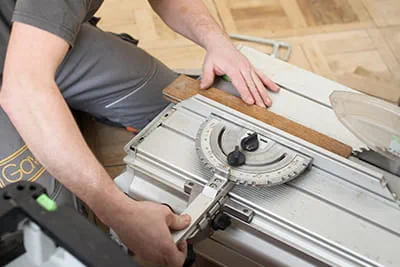
Slow down and instant coffee
"Everyone is rushing these days," said Jarek. When faced with an old floor, he likes to take his time – instead of installing 20 square metres in a day, as is usual in the industry, he might only manage one square metre: for star-shaped patterns or complex inlay work, each piece has to be cut precisely. Working centimetre by centimetre with the old wood in a castle or historical palace brings tranquillity to the mind. But sometimes even the master takes the opportunity to work at a faster pace, because he knows little tricks to speed up the work: "If you coat wood with instant coffee, it ages visually by 200 years," he explained, laughing.


